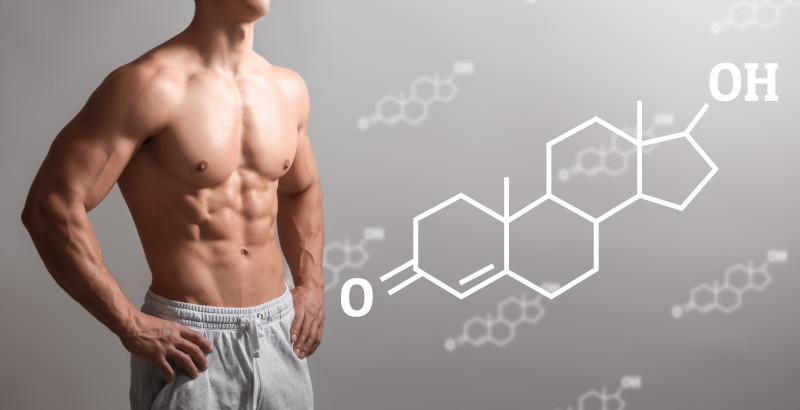In men, testosterone replacement helps ensure normal growth of the genitals, development of male features, sexual function, muscle strength, and bone health. It can be given as shots every 1 to 4 weeks or used as skin patches or gels.
What Testosterone Really Does for Men’s Health
When you hear the word testosterone, you might think of muscles, beards, or even aggressive behavior. But there’s a lot more to this hormone than meets the eye. Testosterone plays a big role in a man’s overall health—from how he feels day to day, to long-term wellness as he ages.
Let’s break down what testosterone does and why it matters, in simple terms.
What Is Testosterone, Anyway?
Testosterone is a hormone made mostly in the testicles. It’s often called the “male hormone” because it helps boys develop into men during puberty—deepening the voice, building muscle, and growing facial hair. But testosterone keeps doing important work throughout a man’s life.
Who Is Testosterone Replace Therapy for?
Androgen therapy is used to restore normal testosterone levels and treat symptoms of deficiency in men with hypogonadism caused by known problems in the testes, pituitary, or hypothalamus.
Why Is Testosterone Important?
Here are some of the ways testosterone helps keep men healthy:
Sex Drive and Function
It’s one of the main hormones that controls sex drive (libido) and supports healthy erections and sperm production. If levels drop too low, it can affect a man’s interest in sex or his ability to perform.
Energy and Mood
Testosterone can impact how energetic and positive a man feels. Low levels are often linked to tiredness, irritability, or even feelings of depression.
Muscles and Strength
This hormone helps build and maintain muscle. That’s why men with healthy testosterone levels tend to have an easier time staying strong and fit.
Bone Health
Believe it or not, testosterone also helps keep bones strong. As men get older, a drop in testosterone can increase the risk of weaker bones or even fractures.
Body Fat and Weight
Low testosterone is sometimes linked to gaining fat, especially around the belly. It can also affect how the body uses insulin, which plays a role in weight and metabolism.
Increased Hemoglobin
Testosterone replacement raised hemoglobin levels more and corrected anemia in more older men with unexplained anemia.
What Happens If Testosterone Is Low?
Testosterone levels naturally go down a little as men age—usually starting around age 30 or 40. But some men experience a more significant drop. This condition is often called “low testosterone” or “low T.”
Common signs include:
- Low sex drive
- Less energy
- Mood changes or feeling down
- Trouble building muscle
- Increased belly fat
If any of this sounds familiar, a simple blood test from your doctor can check your testosterone levels.
Can You Boost Testosterone Naturally?
In many cases, yes! Here are a few ways to support healthy testosterone:
- Exercise regularly, especially strength training like weightlifting
- Eat well—focus on lean protein, healthy fats, and whole foods
- Get enough sleep—7 to 9 hours a night is ideal
- Manage stress—chronic stress can lower testosterone
- Cut back on alcohol and avoid smoking
What should I expect before starting testosterone therapy?
Low testosterone diagnosis involves confirming deficient serum testosterone levels through appropriate laboratory testing, in conjunction with evaluating clinical signs and symptoms consistent with androgen deficiency.
Total serum testosterone
- Initial test of choice
- Draw in the morning (7–10 a.m.) on two separate days
Free testosterone
Consider if total testosterone is borderline or if conditions affecting SHBG are present (e.g., obesity, diabetes, liver disease). Low testosterone is total testosterone level lower than 300 ng/dL accompanied with symptoms and/or signs.
Serum luteinizing hormone levels (LH) and Follicle-stimulating hormone (FSH)
Helps determine if hypogonadism is primary (testicular) or secondary (pituitary/hypothalamic)
Prolactin
Order if secondary hypogonadism is suspected to assess for pituitary disorders
Consider Sex hormone-binding globulin (SHBG)
If interpreting total testosterone in settings that alter binding protein levels
Serum estradiol
Serum estradiol will be evaluated in testosterone-deficient patients presenting with breast symptoms or gynecomastia before initiating testosterone therapy.
Hemoglobin and hematocrit
Assess hemoglobin and hematocrit levels, and counsel patients about the increased risk of polycythemia.
Prostate-Specific Antigen (PSA)
Measure PSA in men over 40 before starting testosterone therapy to help exclude underlying prostate cancer.
Referral to endocrinology
For complex cases, suspected pituitary disease, or if further imaging (e.g., pituitary MRI) is indicated.
What Testosterone therapy options are available for patients diagnosed with low T?
Testosterone skin gels: Apply the gel daily to clean, dry skin as directed. Avoid skin-to-skin contact with others while the gel is still wet to prevent transferring it. These gels are one of the most common forms of testosterone therapy in the U.S.
Testosterone injections: These are injected under the skin once a week or into a muscle every 1–2 weeks.
Testosterone patches: Apply these patches to your skin daily as instructed. Rotate application sites to help prevent skin irritation.
Testosterone pellets: A healthcare provider implants these under your skin every 3–6 months, delivering a steady dose over time.
Testosterone nasal gel: Apply the gel inside each nostril three times a day.
Oral testosterone: Taken as a pill twice a day.
What Testosterone replacement alternatives are available for men who do not qualify for TRT?
Clinicians may prescribe aromatase inhibitors, human chorionic gonadotropin (hCG), selective estrogen receptor modulators (SERMs), or combinations of these agents for men with testosterone deficiency who wish to preserve fertility.
What’s the goal of testosterone therapy?
- The aim of testosterone therapy is to restore total testosterone levels to normal while improving associated symptoms and signs.
- Testosterone levels maintained in the physiologic range of 450–600 ng/dL
- If patients do not experience symptom relief despite reaching target testosterone levels, or if levels remain low despite clinical improvement, testosterone therapy should be discontinued.
About hCG and Testosterone Therapy
Your doctor may recommend adding hCG (human chorionic gonadotropin) to your testosterone treatment. This is typically given at every other day.
Adding hCG can help maintain your body’s natural testosterone production in the testes. Although research is limited (based on a small study), it suggests this approach may help preserve testicular function during testosterone therapy.
Contraindications for Testosterone Replacement Therapy
- TRT is contraindicated in men with prostate or breast cancer.
- Exercise caution in men with a palpable prostate nodule or induration
- Exercise caution with PSA >3 ng/mL
- Exercise caution with severe lower urinary tract symptoms
- Testosterone replacement should not be administered to men with baseline hematocrit ≥50
- Severe untreated obstructive sleep apnea
- Uncontrolled or poorly controlled congestive heart failure, or with myocardial infarction, stroke, or acute coronary syndrome in the preceding 3 months
- TRT should not be administered in men who are trying to conceive
Monitoring for Testosterone Replacement Therapy
- Labs should be drawn 3–6 months after initiating testosterone therapy and then annually
- Labs should be drawn midway between injections
- For patches, labs should be drawn 2-12 hours after application
- For transdermal gel and solution, labs should be drawn 3-12 hours after application
- Adjust dose or frequency if testosterone >600 ng/dL (20.9 nmol/L) or <350 ng/dL (12.2 nmol/L)
- Hematocrit: Check at baseline, at 3-6 months, and annually. Hold therapy if hematocrit >54%
- For men ≥ 40 years with baseline PSA >0.6 ng/mL, digital rectal exam and PSA levels should be checked prior to initiating therapy
- Patient should be referred to urologist if PSA > 1.4 ng/mL in two tests within 12 months of TRT or PSA > 4 ng/dL at any point during TRT
Potential adverse effects of TRT
- Acne & oiliness of skin
- Erythrocytosis-hold therapy if hematocrit rises above 54% and resume when <50%
- Breast tenderness and enlargement
- Leg edema
- Increased risk of detection of prostate events
- Skin irritation with transdermal patch
- Risk of gel transfer to a sexual partner with testosterone gels
- Buccal ulceration and gum problems with buccal testosterone
- Pain and mood fluctuation with injectable testosterone esters
- Cough and injection site pain with long-acting testosterone undecanoate
- Nasal irritation, epistaxis, and nasal scab with intranasal formulation
- Polycythemia is a condition in which there is an abnormally high concentration of red blood cells in the blood. This increases blood viscosity (thickness), which can raise the risk of complications such as blood clots, stroke, or heart attack. In the context of testosterone therapy, polycythemia is an important side effect to monitor because testosterone can stimulate red blood cell production.
Patient Education for Individuals on TRT
- To reduce risk of transferring medication, patients should apply the medication only to recommended areas, wash their hands afterward, let it dry before covering with clothing, wash the area before any expected skin-to-skin contact, and promptly wash any area of accidental contact on women or children.
The Bottom Line
Testosterone is a key part of men’s health—affecting everything from mood to muscle to motivation. If something feels off, don’t ignore it. Talk to your doctor, take care of your body, and remember: taking charge of your health starts with knowing what’s going on under the surface.

TRT Program
Initial Lab Visit includes:
- Comprehensive Hormone Panel labs
- Required prior to initial TRT- program visit
Initial visit for TRT-program includes:
- Comprehensive consultation including lab results review
- Prescription and 1 month supply of required medications
Monthly TRT-program includes:
- Prescription and Monthly supply of required medications
- Access to provider during business hours
Follow Up Labs
- Required every 3-6 month
Reclaim Your Vitality with TRT
Feeling tired, unfocused, or not quite yourself? Low testosterone could be the cause.
Our Testosterone Replacement Therapy helps restore energy, strength, and confidence—so you can feel like yourself again.
✓ Physician-Guided Care
✓ Personalized Treatment Plans
✓ Real, Lasting Results
Start your journey today.

Online Testosterone Replacement Therapy Clinic
What we offer
✅ FDA-Approved Medications
✅ Board-Certified Providers
✅ HIPAA-Compliant Platform
✅ Discreet Delivery
How Our Online TRT Clinic Works
Our process is simple, secure, and designed for your convenience.
Steps
- Online Assessment – Complete a secure medical intake form.
- Virtual Visit – Consult with a licensed provider from home.
- Lab Testing – Visit a local partner lab
- Personalized Plan – Provider reviews results and prescribes TRT if appropriate.
- Discreet Delivery – FDA-approved medications shipped to your door.
Why Choose Our Online TRT Clinic?
✅ Convenience – No waiting rooms, no commutes.
✅ Privacy – Secure platform and discreet shipping.
✅ Expert Care – Board-certified hormone specialists.
✅ Personalized Treatment – Based on labs and symptoms.
✅ Affordable Pricing – Transparent plans, no hidden fees.
Frequently Asked Questions
Ready to Reclaim Your Energy and Confidence?
Get safe, effective testosterone replacement therapy—without leaving home.
References:
Loscalzo, Joseph; Fauci, Anthony S.; Kasper, Dennis L.; Hauser, Stephen; Longo, Dan; Jameson, J. Larry. Harrison's Principles of Internal Medicine, Twenty-First Edition (Vol.1 & Vol.2) (p. 12286). McGraw Hill LLC. Kindle Edition. "
Mulhall JP, Trost LW, Brannigan RE et al: Evaluation and management of testosterone deficiency: AUA guideline. J Urol 2018; 200: 423. https://www.auanet.org/guidelines-and-quality/guidelines/testosterone-deficiency-guideline.
Shalender Bhasin, Juan P Brito, Glenn R Cunningham, Frances J Hayes, Howard N Hodis, Alvin M Matsumoto, Peter J Snyder, Ronald S Swerdloff, Frederick C Wu, Maria A Yialamas, Testosterone Therapy in Men With Hypogonadism: An Endocrine Society Clinical Practice Guideline, The Journal of Clinical Endocrinology & Metabolism, Volume 103, Issue 5, May 2018, Pages 1715–1744, https://doi.org/10.1210/jc.2018-00229